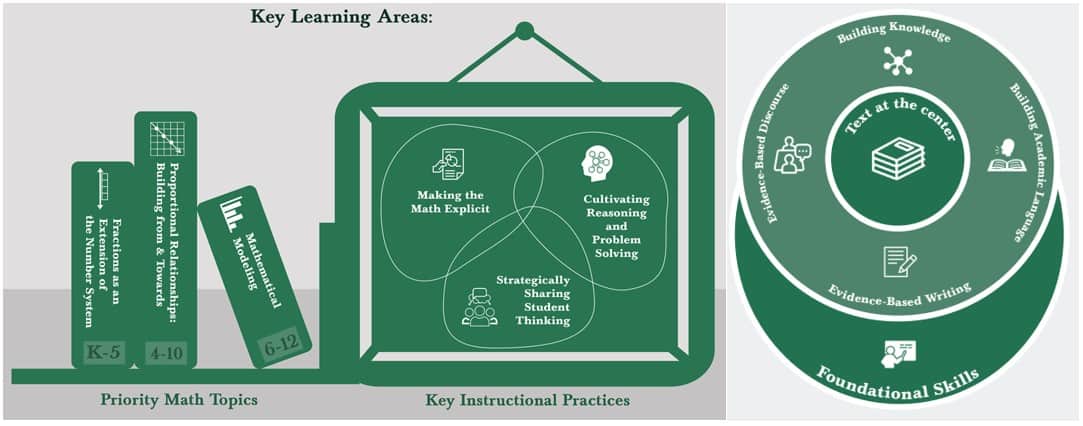No matter how many years we work in education, the start of each school year brings questions. As the 2020-2021 school year nears, many educators are facing new challenges and the increased urgency of ever-persistent challenges, such as how to support all learners in accessing grade-level content. How will we support the academic and social-emotional learning (SEL) needs of students? How do we continue to hone our teaching craft? How can we best prepare to teach for multiple school models: virtual, in-person, hybrid? Many school districts start the year with significant time set aside for teachers’ professional learning. This time for adult learning should support teachers’ very real learning needs–planning for instruction under various school models, learning new technology platforms, meeting the additional social-emotional needs students may have, navigating the ever-present work of addressing unfinished learning, and the list goes on.
These topics may seem distinct, but they’re actually all connected: they are all considerations for creating equitable and effective instruction. But what’s the connection, the through line of all this professional learning? What might make the learning coherent across a week, a semester, a school year? The answer is Instructional content in ELA/literacy and mathematics. We need to be sure that educators are participating in content-focused professional learning, focused on what students learn and how they learn it, even as other topics are addressed in professional learning sessions.
What do we mean by “content-focused professional learning”? For both mathematics and ELA/literacy, we mean six key learning areas that should comprise the bulk of content-focused, standards-aligned, professional learning. We call these the Professional Learning (PL) Core Content, and you can see the key learning areas for mathematics and ELA/literacy in the graphics below.
| https://bit.ly/PLCCMath | https://bit.ly/PLCCELA |
| Who should use the PL Core Content? Anyone who supports the professional learning of teachers–instructional coaches, administrators selecting PL providers, PL designers, teacher prep programs, and everyone in between. As pictured on the triangle graphic (to the right), there are three Principles for High Quality, Standards-Aligned Professional Learning. The PL Core Content provides details on the first of these principles: professional learning must be content-focused. The remaining two principles (be teacher- and student-centered as well as instructionally relevant and actionable) should not be forgotten when designing professional learning for teachers. For more details on the Principles for High-Quality, Standards-Aligned Professional Learning, check out the first blog post of this series: Not Your Mom’s Professional Development. |  |
 |
We hope the PL Core Content for Mathematics and ELA/Literacy provides some clarity on what should be prioritized for content-focused professional learning for teachers, but we recognize adaptations will need to be made to drive innovative, timely, and responsive professional learning that meets teachers’ needs in a given year. For example, as this 2020-21 school year begins, professional learning needs to address the unique challenges teachers face and still focus on content. This focus might look like how to use Flipgrid to build knowledge on the Black Panther movement as part of a 5th grade unit on One Crazy Summer or to showcase and evolve thinking as high school students work through a mathematical modeling task. It might look like how to use Zoom breakout rooms to facilitate small-group phonics lessons on common vowel conventions with 1st graders or to discuss different approaches 4th graders used to solve a fraction comparison problem. It might look like using Google Classrooms to implement standards-aligned ELA curriculum materials between small cohorts of 9th grade English courses or to assign group work to 7th graders working on proportional relationships.
As you begin to plan for professional learning during the 2020-2021 school year, we are working on resources that elaborate on the professional learning and instructional practices outlined in the topic descriptions. We are looking for partners and practitioners to help inform this work; would you be willing to join the effort? If so, please reach out to Rachel Tetteh (rtetteh@studentsachieve.net).
Stay tuned for our next blog post, where we’ll talk more specifically about the choices for ELA/Literacy’s six key learning areas.


















